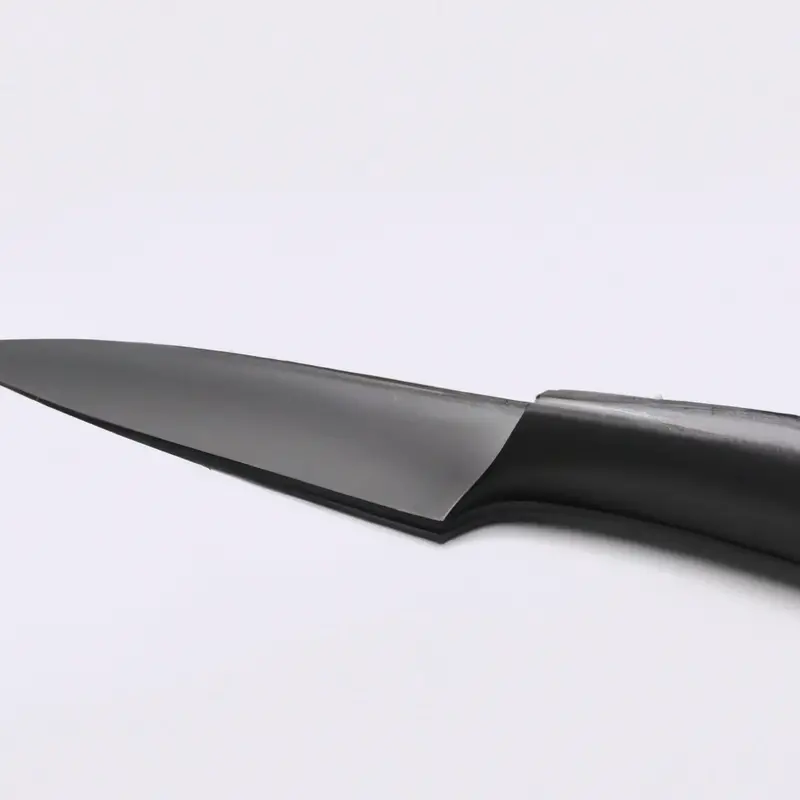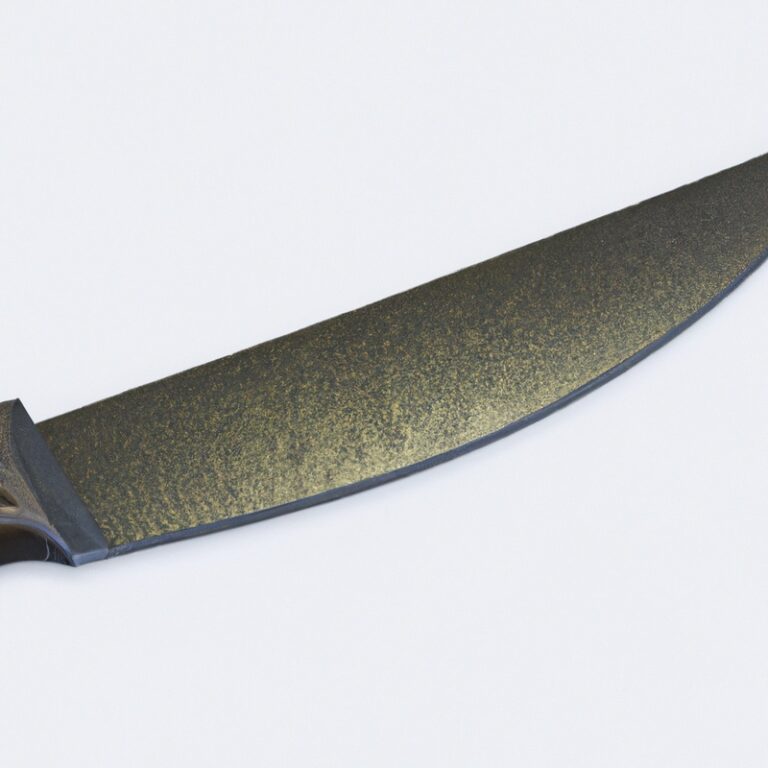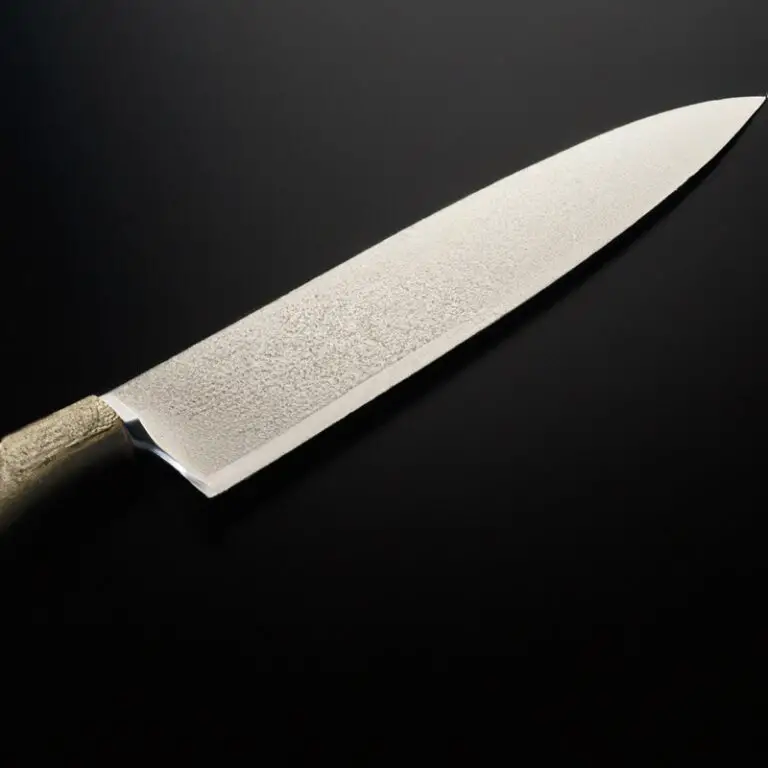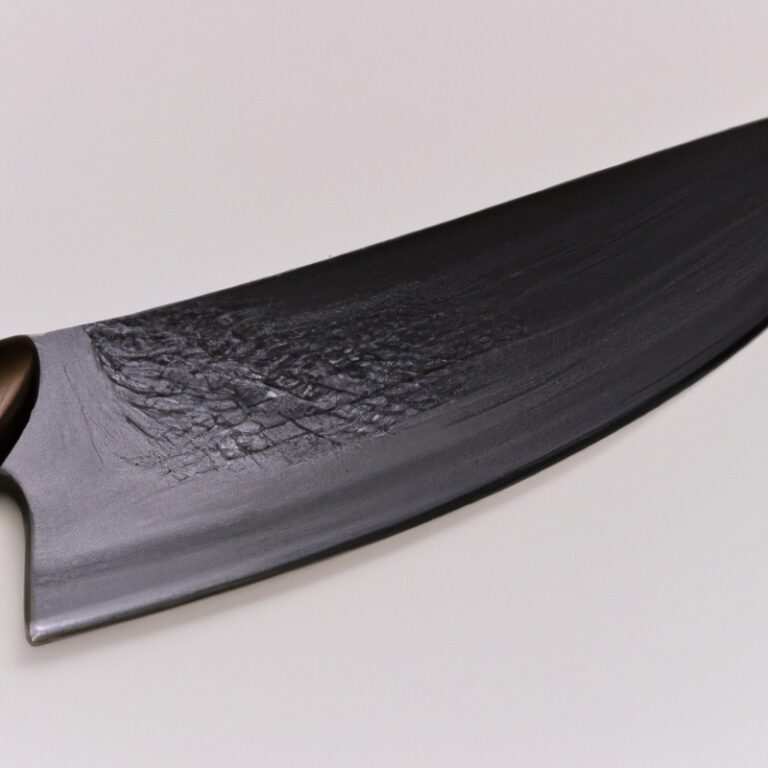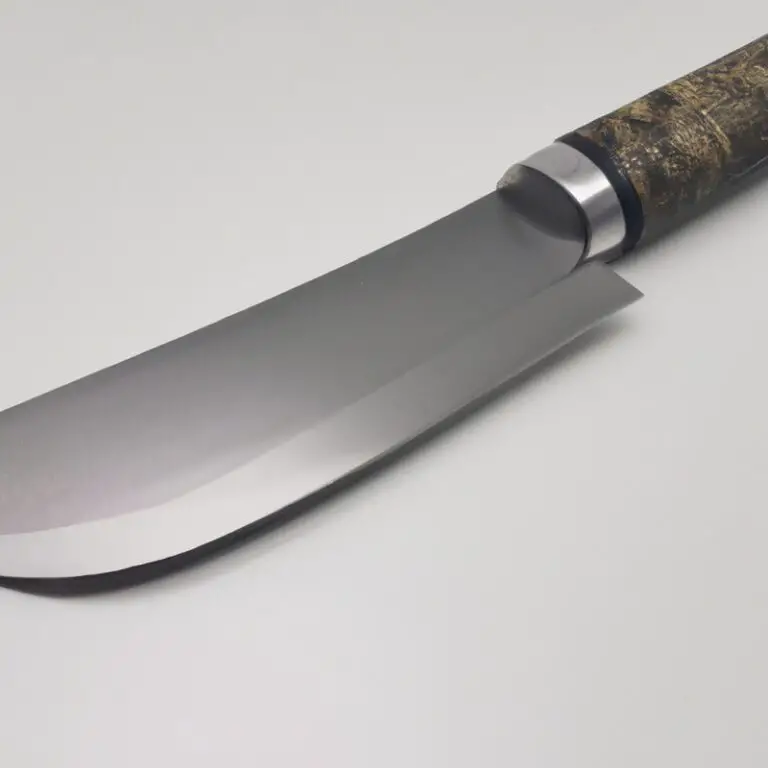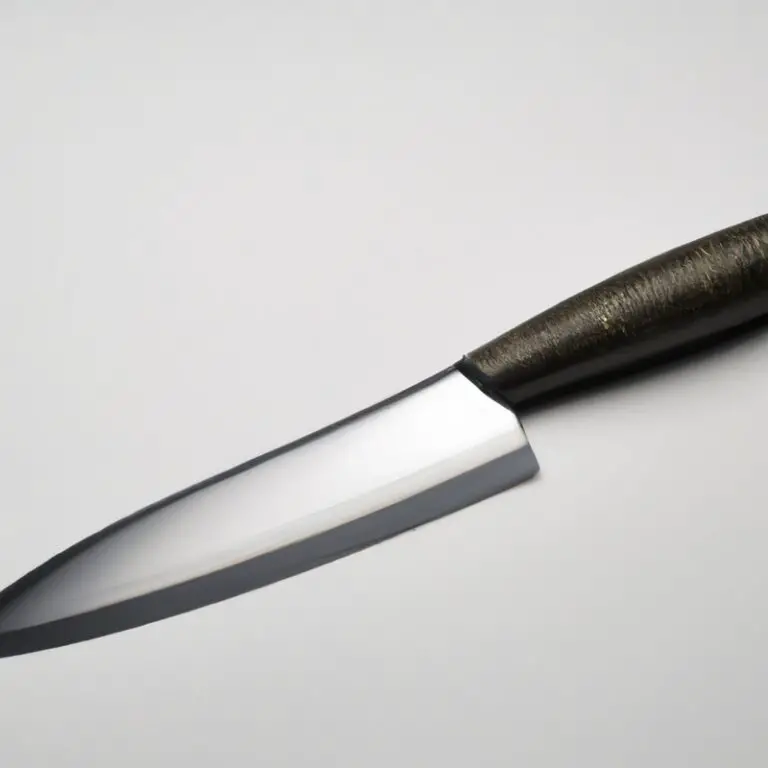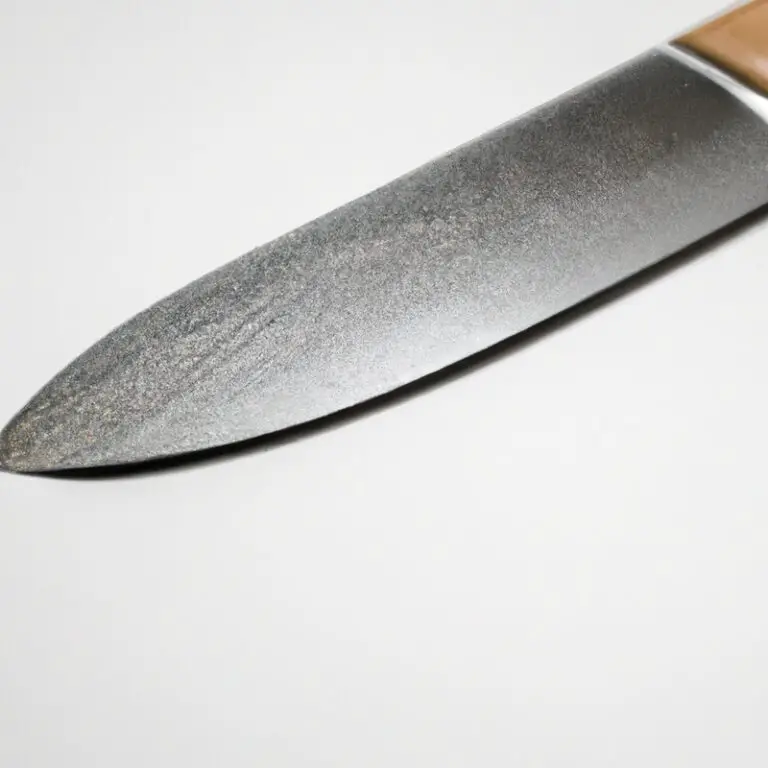How To Achieve Precise Cuts With a Gyuto Knife? MasterChef’s Secret
Key Takeaways:
- Proper technique is key when using a Gyuto knife for precision cuts.
- Ensure your knife is sharp and well-maintained for optimal performance.
- Practice and patience are necessary to master the art of precise cuts with a Gyuto knife.
- Choose the right Gyuto knife for your specific cutting needs to achieve the best results.
Have you ever struggled with chopping vegetables or meat into precise and consistent cuts? Using a Gyuto knife can make a world of difference.
As a professional chef with years of experience, I have learned that mastering the art of precise cuts with a Gyuto knife can take your culinary skills to the next level.
In this article, I will be sharing my expertise and insights on the anatomy of a Gyuto knife, how to sharpen it, choosing the right cutting board, mastering the grip, essential techniques, common mistakes to avoid, and much more. Let’s get started!
| Steps | Description |
|---|---|
| Step 1 | Begin with a sharp blade. Keeping your blade honed will assist in attaining precision with your cuts. If it’s been a while since you’ve honed your Gyuto knife, sharpen it using a honing rod or whetstone until it’s razor-sharp. |
| Step 2 | Get your grip right. Grip the handle of your Gyuto knife tightly but not too tightly. Use a pinch grip to balance the blade’s weight between your thumb and forefinger. |
| Step 3 | Make the cuts with a fluid motion. Swing the blade through the food using a sweeping motion, cutting straight down on the target. Use the entire length of the blade to cut through the food. |
| Step 4 | Consider the speed of your cut. Slow, controlled cuts allow for greater precision, while quick cuts reduce accuracy. |
| Step 5 | Be consistent. The secret to uniformity is keeping the space between each cut consistent. |
| Step 6 | Practice makes perfect. Continuous practice is the key to achieving precision with your Gyuto knife. |
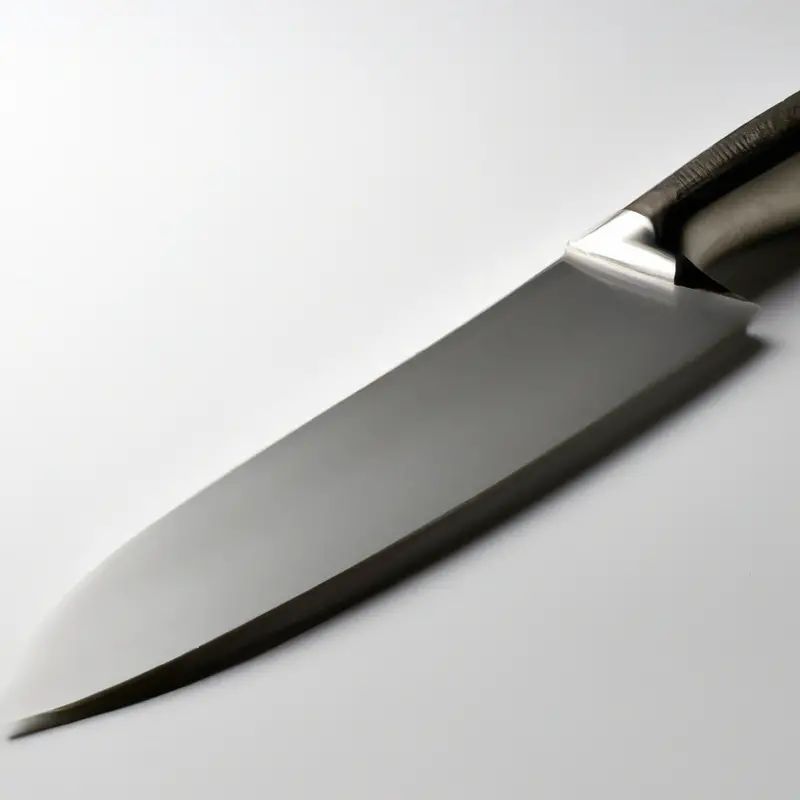
Understanding the anatomy of a Gyuto knife for precise cuts
To achieve precision cuts with a Gyuto knife, it’s essential to understand its anatomy. The blade is typically eight to ten inches long, with a pointed tip and thin profile that allows for easy slicing.
The blade’s curve permits a rocking motion, making it ideal for chopping, mincing, and dicing.
The handle is also crucial, providing a comfortable grip and allowing for full control over the knife. Familiarizing yourself with the different parts of the Gyuto knife will help you make the most of this versatile tool.
It is also important to note that the material used in making a Gyuto knife plays a significant role in its performance.
High-quality Japanese knives are made from hard and durable materials that deliver long-term precision.
The importance of sharpening your Gyuto knife
The importance of sharpening your Gyuto knife cannot be overstated. A blade that is dull or improperly sharpened not only makes it difficult to achieve precise cuts but also poses a safety hazard.
Using a blunt knife requires more force and can slip, potentially causing injury.
Regular sharpening also ensures that your Gyuto knife stays in good condition and lasts longer. Experts recommend sharpening your knife every three months or, depending on usage, every week.
Investing in a good sharpening tool or taking your knife to a professional sharpener will improve your knife’s performance and effectiveness while also ensuring your safety in the kitchen.
Choosing the right cutting board for a sharper Gyuto knife
Choosing the right cutting board for a sharper Gyuto knife is essential for achieving precise cuts. A high-quality cutting board should be durable, non-slip, and gentle on your knife’s edge.
Materials such as bamboo, wood, and plastic are commonly used for cutting boards.
Bamboo cutting boards are a popular choice as they are eco-friendly, lightweight, and gentle on the knife edge. However, they tend to be harder and can cause some dullness over time.
Wooden cutting boards are also a good option as they are gentle on the blade and provide a natural non-slip surface.
According to experts, end-grain cutting boards made from maple, walnut, or cherry are the best options as they are durable and prevent the knife from dulling quickly. Plastic cutting boards, on the other hand, are inexpensive, lightweight, and easy to clean.
They are also gentle on the knife’s edge, making them a great choice for daily use.
However, plastic cutting boards may develop deep grooves over time, making them a breeding ground for bacteria. It is essential to choose the cutting board that complements the type of knife you’re using, depending on the style of the blade.
The ideal cutting board should be significantly more rigid than the knife’s blade, providing steady support while cutting, ensuring precision and reducing blade dulling.
It’s crucial to invest in a good quality cutting board that aligns with the type of knife you’re using regularly. This will not just enhance your precision, but it will also ensure your knife’s longevity.
Mastering the grip for precision in cuts with a Gyuto knife
Mastering the grip of your Gyuto knife is crucial for achieving precision in your cuts. The grip you use should provide optimum control and reduce any unnecessary movements that could result in inaccurate cuts.
To master the grip on your Gyuto knife, place your index finger on the spine of the blade, wrap your other fingers around the handle, and rest your thumb on the side of the blade opposite your index finger.
This grip offers comfort, control, and precision. It’s important to remember to keep your grip firm but not too tight, allowing for maximum control and an efficient cutting motion.
Practice your grip technique regularly to develop muscle memory and improve precision in your cuts.
Essential techniques for precise cuts with a Gyuto knife
Essential techniques for precise cuts with a Gyuto knife:
- Rocking motion: Use the rocking motion of the knife to chop ingredients smoothly. Keep the tip on the board while lifting and lowering the handle.
- Slice technique: Use the slicing technique to cut thin slices by keeping the blade parallel to the cutting board in a slightly diagonal position. Use the full length of the blade to make longer and cleaner cuts.
- Pinch grip: Hold the knife with a pinch grip to have better control and precision over the blade. Place your index finger and thumb at the base of the blade and grip the handle with the rest of your fingers.
- Follow through: As you slice or chop, follow through with the motion to ensure clean cuts. Do not hesitate or stop in the middle of the cut, as this can cause jagged or uneven cuts.
- Patience: Cutting with a Gyuto knife requires patience and practice. Take your time and focus on accuracy to achieve the best results.
By mastering these essential techniques, you’ll be able to achieve precise cuts with your Gyuto knife and elevate your cooking game to the next level.
Avoiding common mistakes that lead to inaccurate cuts with a Gyuto knife
Avoiding Common Mistakes That Lead to Inaccurate Cuts with a Gyuto Knife When using a Gyuto knife, there are some common mistakes that can lead to inaccurate cuts. These errors can make it difficult to achieve precision and may even pose a safety risk.
Here are some tips to avoid these mistakes and ensure that your cuts are accurate:
- Using the wrong cutting technique: The most common mistake people make is using improper cutting techniques. Cutting with a Gyuto knife requires a specific set of skills, including proper hand placement and blade angle. Ensure that you are using the correct technique to avoid inaccuracy.
- Not maintaining the blade: A dull or poorly maintained blade can make it difficult to achieve precise cuts. Sharpen your knife regularly and use honing steel to maintain its edge.
- Using the wrong cutting board: A hard cutting board can damage the blade and cause inaccurate cuts. Opt for a softer material like wood or plastic to protect the edge of your knife.
- Grip too tight or too loose: A grip that is either too tight or too loose can cause the blade to slip, leading to inaccurate cuts. Practice gripping the handle just right and with a steady hand.
Avoiding these common mistakes will help you achieve more accurate cuts with your Gyuto knife and make cooking a more enjoyable experience.
The role of blade size and weight in achieving precision with a Gyuto knife
Blade size and weight play a crucial role in achieving precision with a Gyuto knife. A longer and heavier blade usually offers better balance, stability and control, making it ideal for larger and tougher ingredients.
However, a shorter and lighter blade provides greater agility and maneuverability – perfect for smaller and more delicate tasks.
Users with different hand sizes and strengths may also find some blades more comfortable and easier to wield. Ultimately, the size and weight of a blade should be chosen based on the user’s skill level, the nature of the task, and personal preference.
Maintaining and caring for your Gyuto knife for long-lasting precision
Maintaining and caring for your Gyuto knife is essential to ensure its long-lasting precision. Here are some tips to follow:
- Clean the blade after each use to avoid rusting and corrosion.
- Store your Gyuto knife in a knife block or sheath to prevent damage to the edge.
- Regularly sharpen your Gyuto knife with a sharpening stone or honing rod to maintain the blade’s sharpness.
- Use a cutting board made of soft materials such as wood or plastic to avoid damaging the knife’s edge.
- Don’t use your Gyuto knife on hard materials such as bones or frozen food, as this can damage the blade’s edge.
By following these tips, you can keep your Gyuto knife in excellent condition and achieve precise cuts every time.
Advanced techniques for achieving even more precise cuts with a Gyuto knife
To achieve even more precise cuts with a Gyuto knife, consider the following advanced techniques:
- The pinch grip: This technique involves gripping the blade between your thumb and index finger while keeping the rest of your hand relaxed. This gives you more control over the knife’s movements, allowing for precise cuts.
- The rocking motion: Instead of just dragging the knife back and forth, use a rocking motion. This involves alternating between lifting the blade and bringing it down in a controlled sweeping motion, which can help you achieve more precise cuts.
- The slicing technique: When cutting meat or fish, use a slicing motion instead of a chopping motion. This involves sliding the blade through the protein in one smooth, continuous motion to produce even slices.
- The sharpening angle: Experiment with different sharpening angles to find the one that works best for you. A sharper angle produces a thinner, more precise cut, but requires more frequent sharpening to maintain.
By incorporating these techniques, you can take your Gyuto knife skills to the next level and achieve even more precise cuts.
Common foods that require precision cuts with a Gyuto knife and how to approach them
Certain foods require precision cuts to create aesthetically pleasing dishes, enhance their flavors, and ensure even cooking. Here are some common foods that require precision cuts with a Gyuto knife and how to approach them:
- Sashimi and sushi: These Japanese delicacies require razor-thin slices of fish, which can be achieved by using a long and sharp Gyuto knife. Start with a clean and fresh piece of fish and slice it against the grain in one swift motion towards the tail. Adjust the angle of the blade to create thinner or thicker slices.
- Vegetables: Many vegetables, such as potatoes, carrots, and onions, require uniform and precise cuts for even cooking or to create aesthetically pleasing dishes. Use a pinch grip for better control and start by removing any uneven parts. Then, cut them into even slices, cubes, or strips, making sure they are all the same size.
- Meat: Meat, such as beef or pork, requires precision cuts to ensure even cooking and to remove any excess fat or sinew. Use a sharp and heavy Gyuto knife to slice the meat against the grain, which will make it easier to chew. You can also use a Gyuto knife to butterfly or trim your meat for certain dishes.
- Fruits: Like vegetables, many fruits require uniform and precise cuts to create visually appealing dishes or for even cooking. Use a sharp Gyuto knife to slice fruit, such as melons or mangoes, into wedges or cubes.
Approach these foods with patience, focus, and a steady hand. Remember to always use a sharp and well-maintained Gyuto knife to achieve the best results.
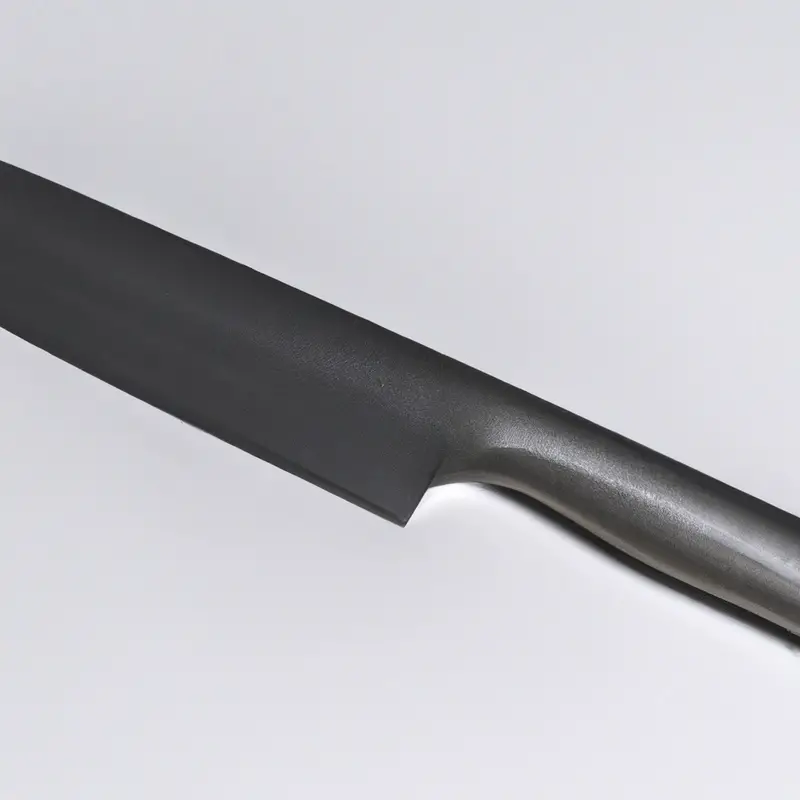
Final Verdict
By following these techniques and tips, you can easily achieve precision while cutting with your Gyuto knife. Understanding the anatomy of your knife, sharpening it and using the right cutting board are crucial elements in achieving accurate cuts.
Mastering the grip, following essential techniques and avoiding common mistakes can also make a significant difference in your final results.
Remember, proper care and maintenance of your Gyuto knife are also essential for long-lasting precision. With practice and patience, you can also achieve advanced techniques for even more accurate cuts.
From slicing soft vegetables to preparing sushi and sashimi, precision is key in achieving professional results.
With these insights, you now have the knowledge and resources to make precise cuts with your Gyuto knife. Keep practicing, and you will soon become an expert in the art of precision cutting.

